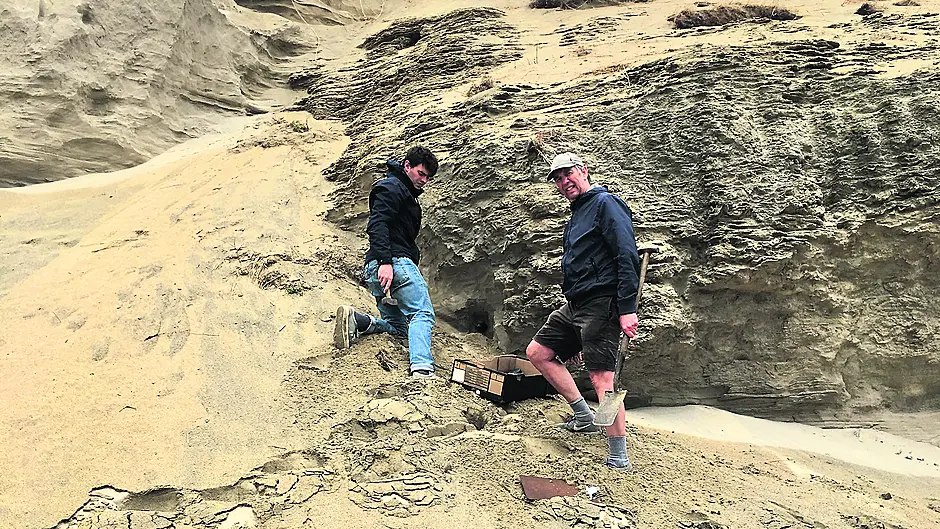WEST Cork geologist Anthony Beese says Barleycove’s tsunami dunes have the potential to become a site of international significance.
Local claims that the dunes at Barleycove ‘came up’ as a result of the 1755 Lisbon Earthquake are correct, according to his new geological survey.
The tsunami that followed the ’55 earthquake also saw the overnight formation of a beach at Barleycove.
‘But that,’ according to Anthony Beese, ‘isn’t the beach we know and love today.’
He said the location of the tsunami dunes is along the tidal channel, a few hundred metres behind the existing beach – a beach that historical maps would indicate was formed after 1900.
‘If some of the sand layers, deposited underwater, can be dated to the eighteenth century it would confirm that the tsunami created the dunes,’ he said.
Geological evidence for the claims is based on the structures and layering in the sand, but radioactive dating would help confirm its seismic origins, he added.
Sand samples from these dunes are to be examined by Prof Mark Bateman from the University of Sheffield in the UK.
If Prof Bateman can date the sand back 300 years, it will confirm Anthony’s findings and the local, oral tradition.
‘What would be truly remarkable about that,’ said Anthony, ‘is that it would make Barleycove the only location in north-western Europe where sediments from the Lisbon Earthquake are clearly exposed.’
Anthony, who has been working on this study for the last six years, said his preliminary findings could also have relevance for other locations such as Cape Clear, Rosscarbery and Castlefreke, and he thanked all those who told him the oral traditions, especially Bill Harte, Patsy O’Driscoll, Michael Collins and Patrick McCarthy.









